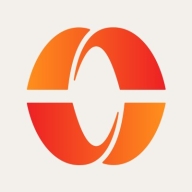

Find out what your peers are saying about Workday, Oracle, SAP and others in Benefits Administration.
| Product | Market Share (%) |
|---|---|
| PeopleSoft | 8.1% |
| Paylocity | 0.8% |
| Other | 91.1% |

| Company Size | Count |
|---|---|
| Small Business | 27 |
| Midsize Enterprise | 16 |
| Large Enterprise | 50 |
Our all-in-one software platform gives HR pros a way to easily manage daily tasks in payroll, benefits, talent, and workforce management. But what makes us different is that our technology is backed by a culture that truly cares about our clients’ success.
Providers will merely sell you a product. But a partner actually cares about you and your business. A partner takes the time to get to know you and understand your needs. We work with you to identify the best solutions that will benefit your business today, while paving the way to a better tomorrow. And tomorrow is all about your team.
Everything we do is designed to support you in reaching your goals. Together, we tackle your day-to-day work so you can spend more time building the culture you and your employees crave.
For professionals who crave true partnership, Paylocity is the HR & Payroll company that frees you from the tasks of today, so together, we can spend more time focused on the promise of tomorrow.
Let's go forward together.
PeopleSoft is an ERP solution that provides businesses with tools for managing their entire workforce including human resources and financial operations, such as payroll, benefits, talent management, and supply chain management. Originally developed by PeopleSoft, Inc., and later acquired by Oracle Corporation, the software helps address talent management needs and maximize employee productivity and efficiency.
PeopleSoft Features
PeopleSoft has many valuable key features. Some of the most useful ones include:
PeopleSoft Benefits
There are many benefits to implementing PeopleSoft. Some of the biggest advantages the solution offers include:
Reviews from Real Users
PeopleSoft is a solution that stands out when compared to many of its competitors. Some of its major advantages are that it has a lot of functionality and is customizable.
A Regional Director at a tech services company mentions, “The most valuable feature is that it's wide and broad and it does about everything anybody needs in a major organization from a back-office systems point of view.”
"PeopleSoft is a good core system. It has a lot of functionality. "They frequently update the solution and recently they have added some good enhancement features for higher education. We just switched to the new fluid interface and that is working very well for us. It is very good," says another reviewer who is an HR/Pay Systems Administrator/Director at a university.
A Senior Manager for DevOps Infrastructure at a financial services firm, explains why he finds the solution so beneficial: "It is a customizable product. We can customize it based on our needs, which is one of the features that I like about PeopleSoft. As far as financial accounting is concerned, the user interface is very good. You can also configure a Chart of Accounts for all performance insights."
We monitor all Benefits Administration reviews to prevent fraudulent reviews and keep review quality high. We do not post reviews by company employees or direct competitors. We validate each review for authenticity via cross-reference with LinkedIn, and personal follow-up with the reviewer when necessary.